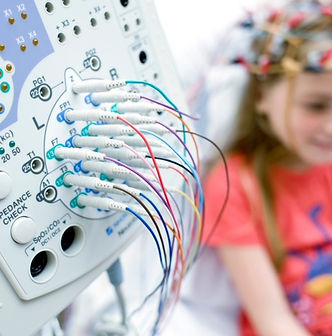“Transformative Journey: Brain Stimulation Therapy and Autism - A Path to Positive Change”
- Reign-Bow

- Feb 1, 2024
- 2 min read
In recent years, Brain Stimulation Therapy has emerged as a promising therapy for individuals on the autism spectrum. This non-invasive procedure has shown remarkable results in alleviating symptoms and improving the overall well-being of those with autism. In this blog post, we’ll delve into the benefits of Brain Stimulation therapy for individuals with autism and explore the timeline of reduced symptoms, offering insights into this transformative journey.
Understanding Brain Stimulation and Autism:
Stimulation Therapy is a therapeutic technique that involves the use of magnetic fields to stimulate or modulate neuronal activity in the brain. Applied to the field of autism, Stimulation Therapy is gaining recognition for its ability to address core symptoms such as communication challenges, repetitive behaviors, and sensory sensitivities.
Benefits of treatment for Autism:
Improved Communication Skills:
Stimulation Therapy has been linked to improvements in communication skills among individuals with autism. Enhanced connectivity in key brain regions can contribute to more effective expression and understanding.
Reduced Sensory Challenges:
Many individuals with autism experience heightened sensitivities to sensory stimuli. Our therapy has shown promise in reducing sensory challenges, leading to a more comfortable daily life.
Enhanced Social Interaction:
Social difficulties are a hallmark of autism spectrum disorders. Stimulation therapy interventions have demonstrated positive effects on enhancing social interaction skills, fostering better connections with peers and family members.
Behavioral Adaptations:
Stimulation therapy may contribute to a reduction in repetitive behaviors often associated with autism. By modulating neural activity, therapy offers the potential for positive behavioral adaptations.
Timeline of Reduced Autism Symptoms:
1. Early Sessions (Weeks 1-4):
During the initial weeks of therapy, individuals may experience subtle changes, such as increased alertness and a potential reduction in sensory sensitivities.
2. Mid-Point (Weeks 5-8):
As treatment sessions progress, improvements in communication skills and social interactions may become more noticeable. Individuals might exhibit greater ease in expressing themselves and engaging with others.
3. Maintenance :
Continued Stimulation therapy often leads to sustained improvements. Reduced repetitive behaviors, enhanced social connections, and an overall improved quality of life may be observed as the therapy progresses.
Conclusion:
Stimulation therapy offers a promising avenue for individuals with autism, providing a non-invasive and effective approach to symptom management. While individual responses may vary, the cumulative evidence suggests that brain stimulation therapy can be a transformative tool in the journey towards improved communication, reduced sensory challenges, and enhanced social interactions for those on the autism spectrum. As research in this field continues, the potential for stimulation therapy to positively impact the lives of individuals with autism remains an exciting prospect.
Reign-Bow Treatment Center
“We Will See You On The Other Side Of The Reign-Bow”





Comments